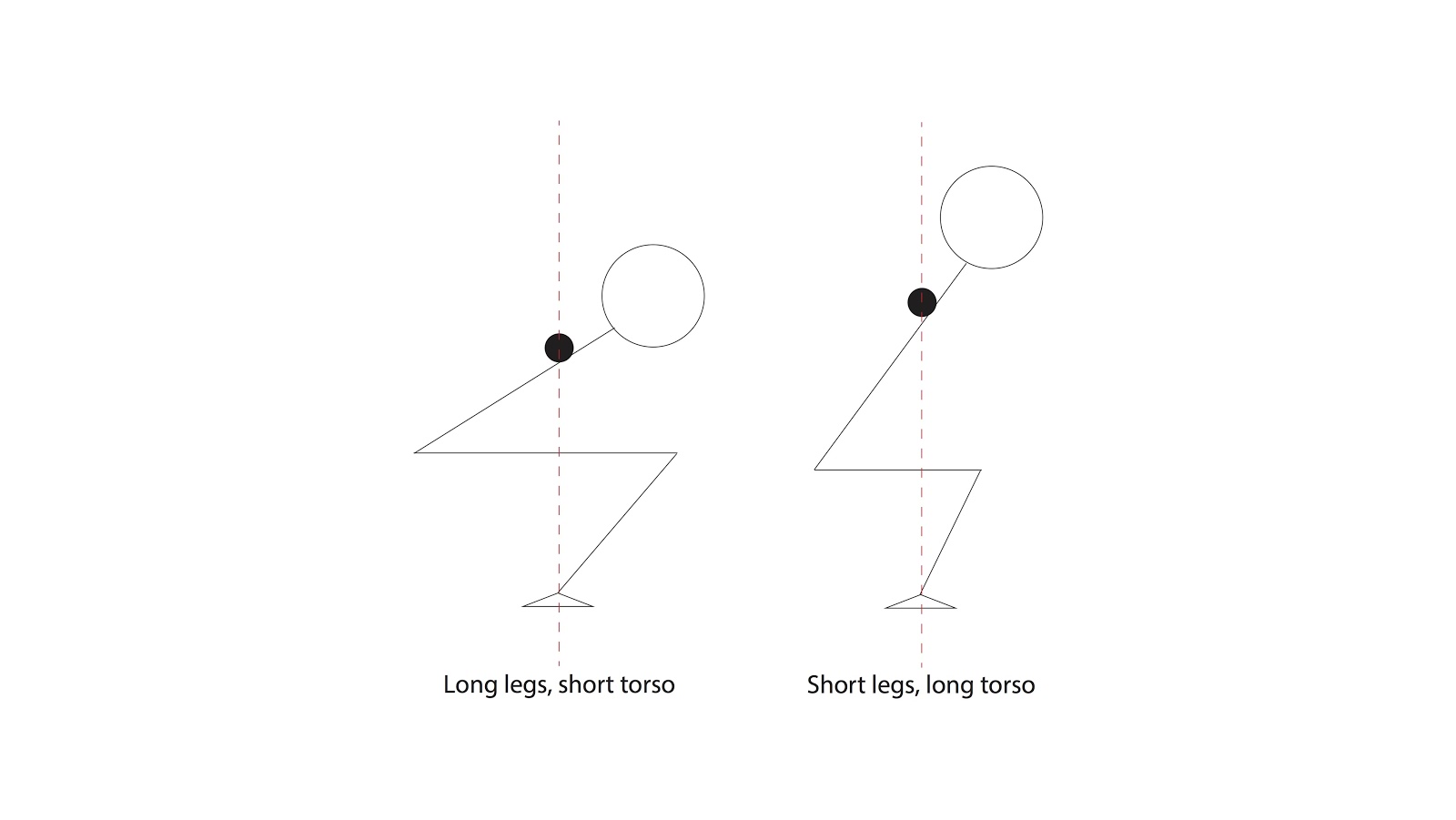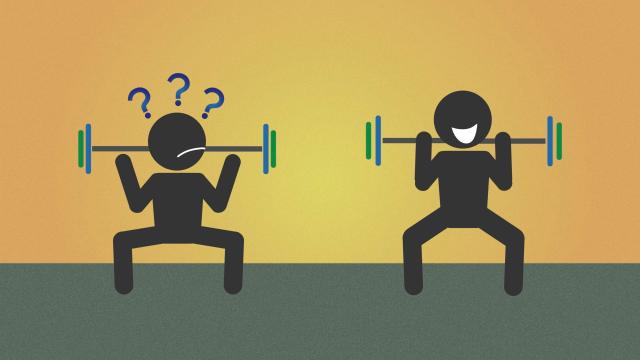You’ve heard all the cues, from keeping your chest up, to pushing your knees out. You’re sure you’re doing everything right, but it still feels all wrong. If this sounds anything like you at the gym, it might be because you’re not using the right form for your body.
Image by berry.
When it comes to lifting weights, there are two major factors to consider are balance and moments, both of which you may have learned in high school physics. Technically, you’re balanced when your center of gravity (most of your mass) is positioned above your base (where you connect to the ground). When it comes to the gym, the importance of this is fairly obvious: you’re going to have a hard time making any progress if you topple over every time you pick up a weight.
Moments are a less straightforward concept. Unlike the name suggests, moments in physics aren’t at all related to time. Instead, they’re a measure of turning force around a pivot. For example: think about how a spanner works. If you have a bolt stuck steadfast onto a nail, it’s near impossible to twist it off with your bare hands, no matter how hard you try. But with a spanner, you don’t need quite as much elbow grease. Just apply a bit of force to the end of the handle, and it starts to unscrew. This is due to moments: by using a spanner, the force you exert is much further from the bolt and screw (the pivot) so there’s a larger turning force (moment), making everything much easier.
When it comes to lifting weights, the goal is to minimise moments around all the relevant joints, while keeping your center of gravity above your base to stay stable. After all, it’s hard enough fighting against gravity, let alone biomechanical inefficiencies. And this is where your individual anatomy comes in.
How you reduce the moments around your joints depends on how long your limbs are and your relative muscle strength. For example, let’s look at the squat. The squat recruits two main pivots, your hip and knee joints, and two main levers, your femurs and your torso. If you have long legs and a short torso, the challenges you face are going to be very different from those faced by someone with short legs and a long torso. To see why, let’s look at an (extremely rudimentary and highly exaggerated) illustration:

As you can see from the image, the person with long legs and a short torso has to bend a lot more to keep their center of gravity above their base. Because of this, they have to fight against larger moments, and need to work a lot harder to avoid tipping forward. On the other hand, the person with shorter femurs and a longer torso will have an easier time staying upright as the sections of their body don’t move too far from their center of gravity
Beyond this, there are other factors that affect form as well. First, there’s the issue of injuries. If you’re recovering from an injury or you have a sensitive area, your best option may be to alter your form to avoid aggravating the area. There’s also the matter of mobility — concessions need to be made if you’re too inflexible or too weak to get in the right position.
How to Adjust Your Form for Your Body
The implication isn’t that you should give up if you’ve been genetically cursed (blessed?) with long legs or suboptimal levers. Instead, understand that there is no one-size-fits-all approach when it comes to the gym. The “right” way is the one that you feel comfortable with, and allows you to minimise the effort and energy expended in moving the weight where it’s supposed to go.
Based on this, here are a few simple modifications to squats and deadlifts — arguably the most important and most troublesome exercises — that can help kick-start your progress in the right direction:
Squats
- If you have long legs and a tough time keeping your torso up, or issues with ankle mobility, try widening your foot placement. It reduces how far forward your thighs need to travel so you don’t need to bend forward as much.
- If you still have issues after wide stance squats, try low-bar squatting. This is when you position the barbell just above your shoulder blades. Provided your shoulders are flexible enough, the bar position helps reduce the moment around your hip joint, and helps recruit more muscles in your behind.
- If you suffer from knee pain, avoid high-bar narrow stance squats, as these place greater stress around the knee.
Deadlifts
- If you lack the mobility to reach the bar, elevate the weights by placing the barbell on a few weight plates or try sumo deadlifts.
- If you have shorter arms or a longer torso, you might also want to try sumo deadlifts — you start off closer to the ground and don’t have to move the weight as far.
- If you’re recovering from a back injury, try a trap bar deadlift. These put less of a turning force on your back, so your back isn’t as vulnerable to injury.
The explanations I’ve given are quite rudimentary, but hopefully give you more of an idea on how physics affects form. If you’re curious and want to read more, Eric Cressey has a great breakdown of deadlift variations, and ExRx has also an in-depth analysis of the squat. They may be a bit dense, but it’s interesting and the principles are transferrable to other exercises as well.

Comments
2 responses to “How Your Body Shape Affects Weight Lifting Form: A Physics Lesson”
Conversely, if you want to get totally immersed in mechanical analysis of squat and deadlift form, among other aspects of strength training, I HIGHLY recommend going down a rabbit hole at http://www.strengththeory.com reading the exceptional work by Greg Nuckols.
edit